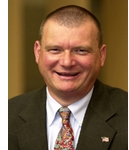
| July 2014 | Past Issues | Printer-Friendly | Advertise | Affiliates Search | Find a Pest Control Operator | PCOC.org |
|
EVP NOTES
The California Legislature has taken upon itself, once again, to try and legislate what it thinks is best for business owners. Pest Control Operators. That means YOU! The trial lawyers are trying to change the workers comp system which means huge increase in premiums; the liberal tax lobby are trying to pass a sales tax on pest control services; ...but wait there is more: They are also attempting to tax commercial property at a different rate than residential property. The radical environmental lobby is attempting to pass legislation to allow local jurisdiction of pest control rather than DPR regulating our industry through proven scientific research..... All of the things that PCOC opposes that will cost businesses huge amounts of money in a state which is already one of the highest taxed and regulated economies in the United States. All of these individually, never mind together, will drive many PCOC members out of business. This is at a time when we are trying to grow membership! It can only get worse! The anti-business forces are well organized: union political fundraising is at an all time high and the environmental lobby is gearing up for a major attack on pesticides and their applications over the next two years on a number of fronts. Their ultimate goal is to ban all pesticides. So, here is the bad news. PCOC's political action committee, PAPCO, has seen a 50% drop in contributions over the last 5 years. Maybe wehave been a product of our own success in stopping and defeating all of the bad bills through our very effective efforts. It is critical that the pest control industry step up its effectiveness and increase its influence in the state capitol. It's all about pressure and access: we have done a very fine job up until now regarding political contributions. We are a lean, mean machine. PAPCO has been a very effective tool to get the job done. However, this is simply not going to be sufficient in the years ahead. Going forward we need to concentrate on two things: First, a comprehensive political contribution strategy to make our voice heard and maximize the dollars collected. Second, to develop a plan that will double the amount that PAPCO collects. I repeat: We need to double our contributions this year. This will involve thinking outside the box and coming up with activities that have never been done before. Our PAPCO Trustees are working on this and are developing an action plan. These are challenging times, but I am confident that we are equal to the task because of the dedication and commitment of PCOC members. There is no option to do nothing. Otherwise, there will be no pest control industry in California in 10 years. Scary? Yes. Scholarship Winners 2014 Mackenzie Gauden Macie Adams Bethany Chapdelaine Mailey Augustine Kelly Fox Edie Keene Amanda Ozaki LEGISLATIVE UPDATE
The 2013-2014 Legislative Session of the California Legislature is in progress. Click here for PCOC's Legislative Agenda. IN THE NEWS
NEONICOTINOIDS
BANNED IN SPOKANE

In June 2014, the Spokane City Council voted 5-2 in favor of banning city purchase and use of Neonicotinoids. The ban only applies to city property and not private use. Council president Ben Stuckart sponsored the ordinance as part of a series of environmental steps the city is taking. Stuckart state, "Bees are so important, we should be leading the way to protect them." The measure does not affect the parks department. However, the parks director told the council they do not use Nionicotinoids.
Mike Fagan
and Mike Allen were the two council members that voted no. Fagan said, "There
is no settled science right now" that shows chemicals are contributing to the
disappearance of bees. Allen echoed his concerns. However, Councilwoman Amber
Waldref said, "I am convinced they do have an impact on pollinators in our
community." ODA SUSPENDS LICENSE OF A BUSINESS IMPLICATED IN BEE
From NPMA The company allegedly sprayed 17 linden trees in
bloom last week. ODA asserts that the company should have known the pesticide
had come under new restrictions after being linked to a high profile bee kill
last year. As a condition to regaining their license, the company agreed to
cover the sprayed trees with shade cloth to prevent more bees from being
poisoned, getting personnel recertified to handle pesticides, and developing a
plan to prevent future problems. This episode should serve as a reminder to PMPs
throughout the country that they and their technicians need to be extremely
cautious when making applications near bees or bee friendly habitat. PMPs
should be especially aware of the new pollinator protection language on many
neonicotinoid product labels. The
Oregon Department of Agriculture (ODA) last week suspended the pesticide
license of a pesticide applicator company responsible for spraying an
neonicotinoid insecticide blamed for killing 1,000 bees at a Eugene apartment
complex. CUTTING THROUGH THE BUZZ: POLLINATOR NUMBERS ARE UP - COMMENTARY A recent article was published in the Roll Call Newsletter. It was written by Reps. Tom Rooney, (R-Fla.) and David Valadao, (R-Calif.), who are members of the House Appropriations Subcommittee on Agriculture. Here is the article in its entirety. If you wish to see the original, CLICK HERE For some time now, the media has been
issuing dire warnings of the coming "beepocalypse." While the overall picture is much more optimistic than what is portrayed in the media, some beekeepers have experienced problems maintaining the health of their hives. Higher-than-normal losses of bees over the winter in some years have resulted in economic setbacks for some beekeepers, though the USDA found last year’s loss rate much lower. In reporting on these numbers, many journalists fail to recognize that worker bees only live for six weeks in the summer and hive strength can quickly regenerate to compensate for losses. The USDA cites many factors afflicting bees, but the primary one is the epidemic spread of the varroa mite and the crippling diseases it vectors into the bee. Additional problems include lack of forage and the stresses of the transcontinental pollination business. As for pesticides, the USDA places them near the bottom of the list. In fact, the USDA is concerned about the miticides beekeepers themselves use to control varroa. It’s clear from real world experience and extensive field studies that neonics are not a significant factor. Bees thrive in the millions of acres of neonic-treated canola grown in Western Canada and the pesticides are used extensively in Australia, a continent that has some of the healthiest bees in the world. But while bees aren’t harmed by these popular pesticides, farmers — and consumers — would be if they were banned. Neonics are all that is saving the U.S. citrus industry from destruction by "citrus greening" disease. Without them, rice and cotton farming would become economically unviable throughout much of the U.S. Leafhoppers would devastate vineyards in California and the Pacific Northwest. Neonics are one of the most critical pesticides used in modern agriculture and safely utilized in the production of numerous crops, from corn and soy to vegetables of all kinds. We must understand why activist organizations have decided to target neonics for elimination. They won the day in Europe, where the EU overrode the doubts of its own scientists and pushed through a political ban. As a matter of fact, the EU just conducted a survey to find out how bad the losses really are and were clearly taken aback by the findings. Seventy-five percent of the bee population experienced overwinter losses of 15 percent or less — a rate considered completely normal in the United States. High overwinter losses occurred among 5 percent of the bee population in the very cold north. Summertime losses were insignificant. The biggest danger to bees in the EU are the older classes of pesticides, especially the pyrethroids now used as a result of the neonic ban. The activists want us to ban first and ask questions later. We should not legislate based on sensationalist and fallacious press accounts. The facts clearly don’t support the calls for a ban. Etex / Electro-Gun
Termite Control Celebrating 35 years providing a non-chemical termite treatment product to PCO's throughout the USA! Call and find out the benefits of leasing www.etex-ltd.com UPCOMING EVENTS
2014
July 31 16th Annual PCOC Fishing Trip Sponsored by the San Gabriel Valley District Seaforth Landing San Diego, Calif. Flier October 7 Tri-District Golf Tournament Sponsored by San Bernardino/ Riverside, Orange County, San Gabriel Valley Districts Coyote Hills Golf Course Fullerton, Calif. Golf Flier Helicopter Ball Drop Flier Sept 26-27 Board of Directors Meeting
Doubletree by Hilton Sonoma
Rohnert Park, Calif.
Dec 12-13 Board of Directors Meeting
Hilton Palm Springs
Palm Springs, Calif. Comings and Goings
Welcome to a new section of Newsbriefs! Here, we will give news from our members: new hires, retirements, etc. If you have some news you would like to share, please send a short sentence or two to breann@pcoc.org. MEMBER NEWS
MEMBER VALUE PROGRAM
PCOC MONTHLY INSURANCE/SAFETY TIP
Voice Magazine June 2014 By: Paul Lindsay, Program director Consider the challenges we faced. In the mid-1980s, errors and omissions insurance (designed to cover the most frequent type of claim impacting the industry) did not exist. Many policies did not cover pesticide applications (no pollution coverage) — the very essence of the pest control profession. Those carriers that stayed in the marketplace increased rates by 100 percent to 1,000 percent. Yes, 1,000 percent! This effectively put many operators out of business. Through the leadership of Harvey Logan (then executive vice-president of the PCOC) and Carl Doucette (then of Western Exterminators and chairman of the PCOC insurance committee), the PCOC took a stance. They would prove, via a broad and detailed feasibility study, that the risks inherent to pest control were not nearly as bad as the insurance industry thought. Further, the insurance claims and loss ratio decried by the carriers were not as bad as they alleged. Thus, an insurance program based on facts and controlled by the PCOC could offer better coverages and services at affordable rates. In 1987, the PCOC assessed a $50 per member fee to fund the study. A request-for-proposal (RFP) went out to six key brokers. This event would set into motion what became the best part of my insurance career. I was sitting in my office at Fred S. James in San Francisco when the RFP came in. Jim Peterson, Rick Cowan, and I reviewed the well-written request. We were impressed with the position and optimism of the document. I was named the lead, with Rick and our staff in support. When I told my wife about this challenging project that night, she gave a little chuckle and pulled out a bumper sticker that read, "Say No To Pesticides." With a shrug, she said, "I guess I better not put this on our station wagon!" We still laugh about what became a pivotal moment in my career. Pivotal because the sentiment expressed on the bumper sticker personified the misconceptions that plagued — and continue to plague — he pest control industry to this day. You see, right then and there I believed in the PCOC's theory and vowed to help them solve this industry-wide crippling problem. Led by Carl and Harvey, Rick and I gave our presentation to an insurance committee comprised of eight additional members: Lee Blevins, Charlie Clark, Ben Diedi, Lyle Evans, Bob Gordon, Allen Kanady Jr., Michael Katz, and Gene Reeve. In their sage wisdom (either that, or we fooled them!), they selected Fred S. James. Over the next 18 months, the James team collected and analyzed the five-year history of the premiums and losses for more than 400 PCOs. We held onsite meetings with key carrier claims adjusters to discuss their handling protocols. Harvey and I went in the field with several underwriters to see branches one, two, and three in action. Neighborly Pest Management, Delk Pest Control, Clark Pest Control, and Admiral Pest Control were delighted to help. Through this study we learned: 1.Insurance underwriters mixed structural pest control with agricultural, crop, and orchard applications when they considered the risks presented by structural pest control operators. 2.The insurance underwriting "bible," Best's Underwriting Guidelines, furthered this misconception by including animal control (domestic and wild), county Vector control, and long since banned chemicals, etc. in their analysis. 3.Structural pest control industry loss ratios were 45 to 55 percent, not the 100 to 200 percent that several carriers claimed or alluded to. 4.The carriers were largely not fighting chemical sensitivity claims, falling victim to the hyperbole and misconceptions caused by ignorance, bias, and some environmental groups. 5.The lead carrier at the time would hand out $5,000 per instance of alleged E&O claims rather than fight them, saying they were "too expensive to deny, too expensive to defend." On the humorous side (stemming from a sad loss), I also learned to not expose underwriters to the war stories of the field technicians. I will never forget one fume crew member jumping down from a one-story roof, strolling over to us and bemusedly relating how he had just accidentally fumed two cats! Of course the underwriter was a major cat lover and nearly fainted on the spot! I really earned my combat pay for this project when I gave quarterly study updates at the PCOC board meetings. Jim Clark Jr., Dan O'Connor, Bob Gordon and others really put Carl and me through our paces. "How do we know these numbers are true?" "How current and valid is this data?" "When are we going to see some positive results?" There was no sweet-talking those guys! Between the summer of 1988 and March of 1989, we met and presented to 22 insurance carriers. With Industrial Indemnity we found the One. Together, we re-wrote the Best Underwriting Guidelines, re-designed the pesticide and herbicide applicators endorsement, and launched true errors and omissions coverage. We developed structural pest control underwriting guidelines designed to ensure a long-term and stable insurance market. Finally, we created loss prevention protocols to improve business practices and keep loss ratios low. Thus, on April 1, 1989, I had the honor of writing the PCOC Insurance Program's first policy, Hydrex West Coast, owned by Dan O'Connor— a policy still in effect today. Between 1989 and 2014, we have written more than $150,000,000 in premiums and paid out approximately $75,000,000. The starting general liability rate per thousand dollars in 1989 was $80.00; today, it is $20 before risk credits! With the PCOC, we have fought and beat fraudulent claims, pushed back the plaintiff attorneys and thwarted the "toxic mold" threat. Through "lessons from losses," training and education, and risk control practices, we have helped to improve industry practices and improve the industry's public image. We have kept PCOs in business and made them financially whole. And, just in case we have made it look too easy, consider that the majority of association-backed insurance programs fail within the first 36 months. Only a tiny percentage last 25 years. How have we done this? Vision, a mandate and teamwork. A vision born from adversity and a mandate from gifted PCOC leadership that said the threat would be conquered. A leadership that drove and continues drive the best pest control insurance program offered. In closing, I get a lot of credit for the program's success, and I really appreciate the compliments. However, as you can see, I was but one of many that made it happen. From the insurance side, I have to thank the original team: Jim, Rick, Marc, Greg McDermont, and Bruce Horton (and others too numerous to mention.) The addition of Laura Coy and Michael Glauser in 2002 and leading the present-day team has been extremely gratifying to me. They are taking this program to a whole new level of professionalism. From the pest control side, I must mention the awesome support, advice, and leadership/friendship offered by: the Peacock board of directors (past and present), the PCOC Executive Committee (past and present,) and especially Lee Whitmore, Lee Blevins, Charlie Clark, Allen Kanady. Gene Reeve, Steve Delk, Hal Stein, Jim Shockey, Greg Augustine, Fred and Nancy Rose, Duff and Janet Thrasher, and too many others to mention here! Then, a special thank you to Harvey and Carl; what started out as a dream became reality — thank you for keeping me and the program on track! Well, I see another claim has hit my desk while writing this article that I have to get to, so I will end here by saying congratulations, and here's to another wonderful 25 years! NEW MEMBERS
FREQUENTLY REQUESTED INFORMATION
NPMA LOGIN FOR JOINT MEMBERSHIP LOGIN: 313501 PASSWORD: PCOC
Department of Fish & Game Department of Food & Agriculture Department of Pesticide Regulation (DPR)
www.cdpr.ca.gov DPR on Facebook www.facebook.com/capesticideregulation DPR on YouTube (see "playlists" for videos pertaining to new surface water regulations) www.youtube.com/user/californiapesticides DPR on Twitter twitter.com/ca_pesticides DPR LinkedIn www.linkedin.com/company/california-department-of-pesticide-regulation Healthy Schools Act http://apps.cdpr.ca.gov/schoolipm/ Structural Pest Control Board www.pestboard.ca.gov Find Your Legislator |
Pest Control Operators of California |
 |



